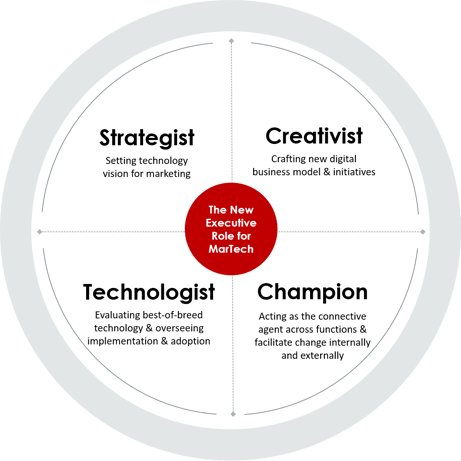

Batman & Superman: Should IT and Marketing Join Forces?
Batman & Superman: Why Should IT and Marketing Join Forces in the DAM World & How?
In the movie, Batman and Superman begin as rivals and eventually join forces to fight their common foe.
Like the Head of IT, Batman creates his bat suits and gadgets (i.e. technology) to win his battle. Similar to the Head of Marketing, Superman has superpowers (i.e. end users & business processes) and augments conventional technology to do things that Batman can’t do alone.
In the business world, the two key players at first sight may not be a natural double act. For IT, the primary goal has historically been maximising efficiency and scale while minimising cost, but not necessarily prioritising what the end users want. Marketing, however, likes to move fast, spend money, develop new ways to engage customers and achieve ROI.
Without question, the conflicting goals and mindsets between IT and Marketing have an impact on DAM implementations. DAM solutions are undoubtedly technology components, and therefore, have traditionally been the domain of the IT department within organisations. As the increasing influence of digital transformation starts to touch on every aspect of business, and Marketing particularly, the frustration elicited by IT-heavy DAM solutions have grown: cumbersome UI, limited search functionality, hard-coded workflow, difficult permission settings, and counterintuitive taxonomies, to name just a few.
It is only when software (technology) begins to integrate into the marketing mindset (people) and workflows (process) that the true values of DAM can be unlocked. The right approach is to bring IT and Marketing together for joint ownership and collaboration. So how should Batman and Superman work together in the DAM world?
Finding Common Ground in ROI & Budgeting
IT and Marketing must align on the scope of the DAM solution and their common objectives if they want to gain from it. They must share and combine the DAM technology budget.
For example, at one health care organisation, the Head of Marketing selects tech vendors and purchases the technology using IT’s budget. The IT Director helps the Marketing department implement the technology with an eye for compliance and security. Another example with a global soft drink manufacturer empowers marketers to do UX research and vet the DAM solution, but the CTO makes the final call.
I share these examples to make a point: there is no “right” structure for managing DAM budgets. The obvious approach for IT and Marketing to make DAM investment decision is to have shared ROI, then handle it incrementally and in well-defined stages which can then be carefully assessed before committing more funds. It will pay off. According to Gartner “CIOs who build strong relationships with CMOs will drive a 25% improvement in marketing technology ROI."
Planning & Executing Together
IT and Marketing must plan how the DAM technology will be implemented, used and maintained, together, from the start through to “Business As Usual”. It sounds like a no-brainer, but I’ve seen poor practices in reality:
In a large UK manufacturer of household appliances, the DAM platform was procured and implemented by IT for a targeted marketing function. Over the years as the DAM usage expanded across departments, the loose governance and ambiguous business ownership resulted in siloed accountability, fragmented workflows and unstructured taxonomies. The DAM solution didn’t bring any value to the business, on the contrary, it introduced extra manual processes, increasing headcount and agency costs, and inhibiting the company from doing more with less.
In a Global alcoholic beverages company, IT was charged with selecting the technology, but the Marketing Director made the final call on implementation. The result of sole and separate ownership resulted in a heavily customised SaaS DAM platform that looked ‘shiny’ for marketers but required ongoing development efforts to maintain and upgrade, making the DAM a more costly solution.
Key learnings from examples above: both IT and Marketing specialities and perspectives need to be brought together for the DAM solution to be most effective and sustainable.
One example of great IT and Marketing collaboration on DAM implementation comes from a Global FMCG company, currently in the journey of upgrading its global DAM platform. Both the IT and Marketing Directors are empowered to choose the vendor using a combined budget. Through regular meetings and idea-sharing, they collaboratively evaluate every possible use case and data model scenario and make decisions on going (e.g. “Out Of The Box” vs. customisation) to ensure the solution is credible and justifiable in the context of both business and IT. Roles and responsibilities have been clearly defined: Marketing owns UI and UX design, change management and user-facing business operations; IT manages back-end configurations and development operations. In essence, Marketing knows how DAM should function, IT knows how to make it function, and they both recruit people with deep domain expertise who are then best able to get the job done.
Creating a New Executive Role
Over the past few years, the MarTech industry has been talking about a new type of executive emerging at the centre of digital transformation. It has an array of titles - “CMTOs” (Chief Marketing Technology Officer), or “CMTs” (Chief Marketing Technologist). Regardless of title, the new role has four sub-roles to play:

Shifting Mindsets
Finally (and this is a tough ask), a supporting organisational culture is required to make real ‘magic’ happen. The C-Suite has a greater role to play, starting with ‘stop distinguishing technology from the departments who use it’.
In a virtuous cycle, what’s possible with technology should inspire what’s desirable for marketing and beyond. Finance, HR, sales, and customer service, etc., all depend on specialised technology. IT should oversee the shared systems used across an organisation, but each department needs its own tech-savvy specialists in its own domain. If the CMTO role exists, the Chief Sales or Customer Technology Officer can’t be far behind.
If Batman and Superman do join forces, who or what then is their common foe? I would argue that the common foe, challenge or opportunity is change. Changes like consumer demands, customer requirements, evolving technology trends (not only at enterprise level, but at the shopper’s fingertips). The COVID-19 pandemic is a perfect example of change that is impacting on every single aspect of our lives. These changes, both expected and unexpected, are constantly challenging how organisations should re-visit and re-define their global technology infrastructure. Only by cooperating can Batman and Superman - IT and Marketing - confront the business and technological changes that challenge the world’s top brands.
By Jing Wang, Marketing Technology Consultant

.png?length=800&name=Untitled-4-CrOps%20Maturity%20Assessment%20landing%20page%20graphic%20(1).png)


%E2%80%8B-%E2%80%8B%20%E2%80%8B.png?length=256&name=Purple%20B__Align%20(Content%20Alignment)%E2%80%8B-%E2%80%8B%20%E2%80%8B.png)
%E2%80%8B-%E2%80%8B%20%E2%80%8B-1.png?length=256&name=__Align%20(Content%20Alignment)%E2%80%8B-%E2%80%8B%20%E2%80%8B-1.png)
%E2%80%8B%20%E2%80%8B.png?length=256&name=Blue%20B__Implement-%20(Technology%20Implementation)%E2%80%8B%20%E2%80%8B.png)
%E2%80%8B%20%E2%80%8B.png?length=256&name=__Implement-%20(Technology%20Implementation)%E2%80%8B%20%E2%80%8B.png)
%E2%80%8B.png?length=256&name=Blue%20B__Adopt-%20(Technology%20Adoption)%E2%80%8B.png)
%E2%80%8B.png?length=256&name=__Adopt-%20(Technology%20Adoption)%E2%80%8B.png)





%E2%80%8B-%E2%80%8B%20%E2%80%8B.png?length=256&name=__Align%20(Content%20Alignment)%E2%80%8B-%E2%80%8B%20%E2%80%8B.png)





%E2%80%8B-%E2%80%8B%20%E2%80%8B.png?length=256&name=Blue%20B__Align%20(Content%20Alignment)%E2%80%8B-%E2%80%8B%20%E2%80%8B.png)
%E2%80%8B%20%E2%80%8B.png?length=256&name=Cyan%20B__Implement-%20(Technology%20Implementation)%E2%80%8B%20%E2%80%8B.png)
.png?length=256&name=Blue%20B__Activate%20(Content%20Activation).png)
.png?length=256&name=__Activate%20(Content%20Activation).png)

.png?length=256&name=Data_%20Outcome_White%20BG%20(1).png)










